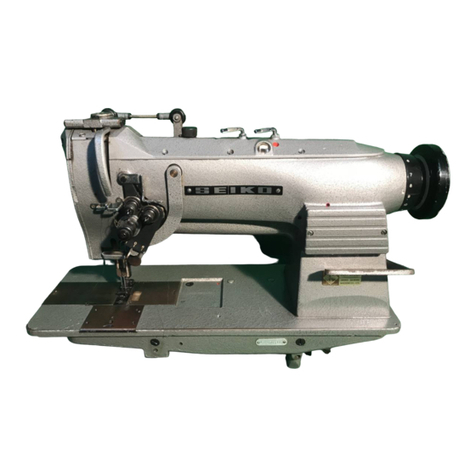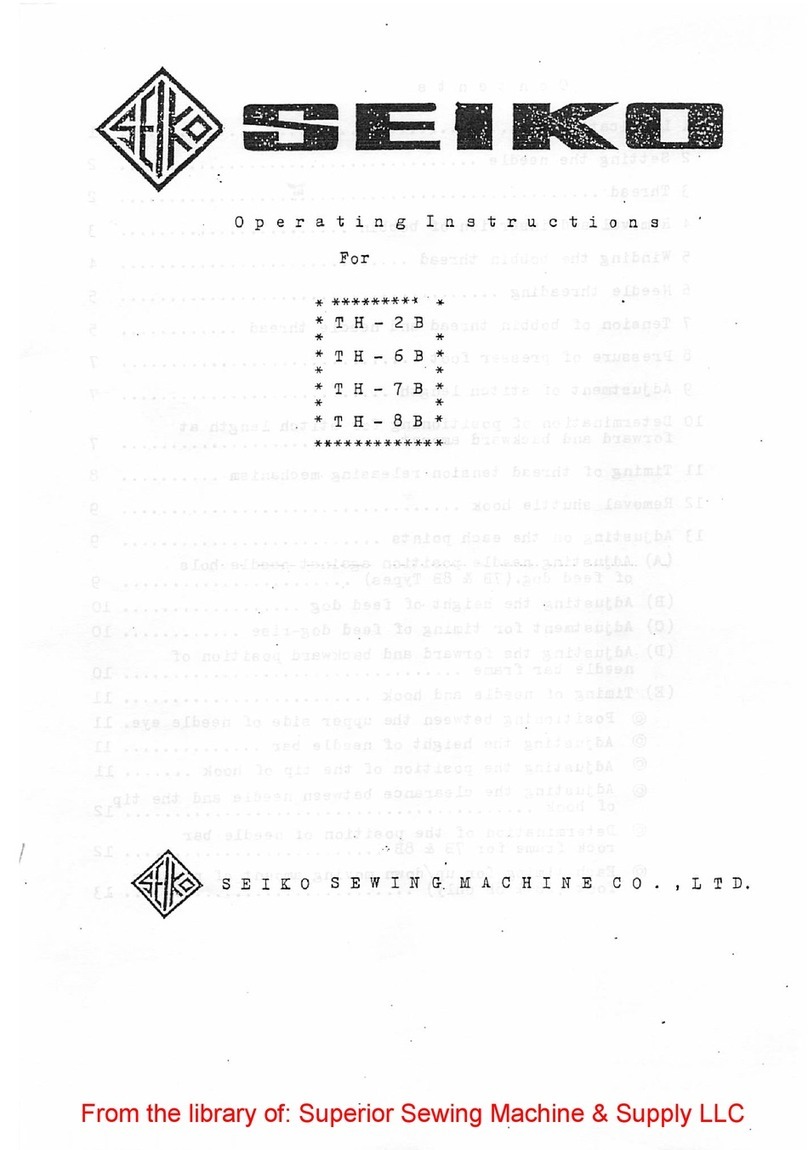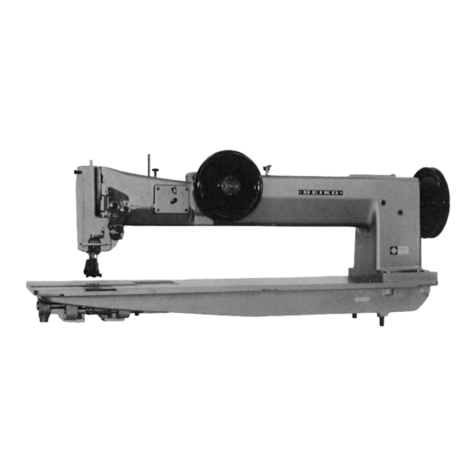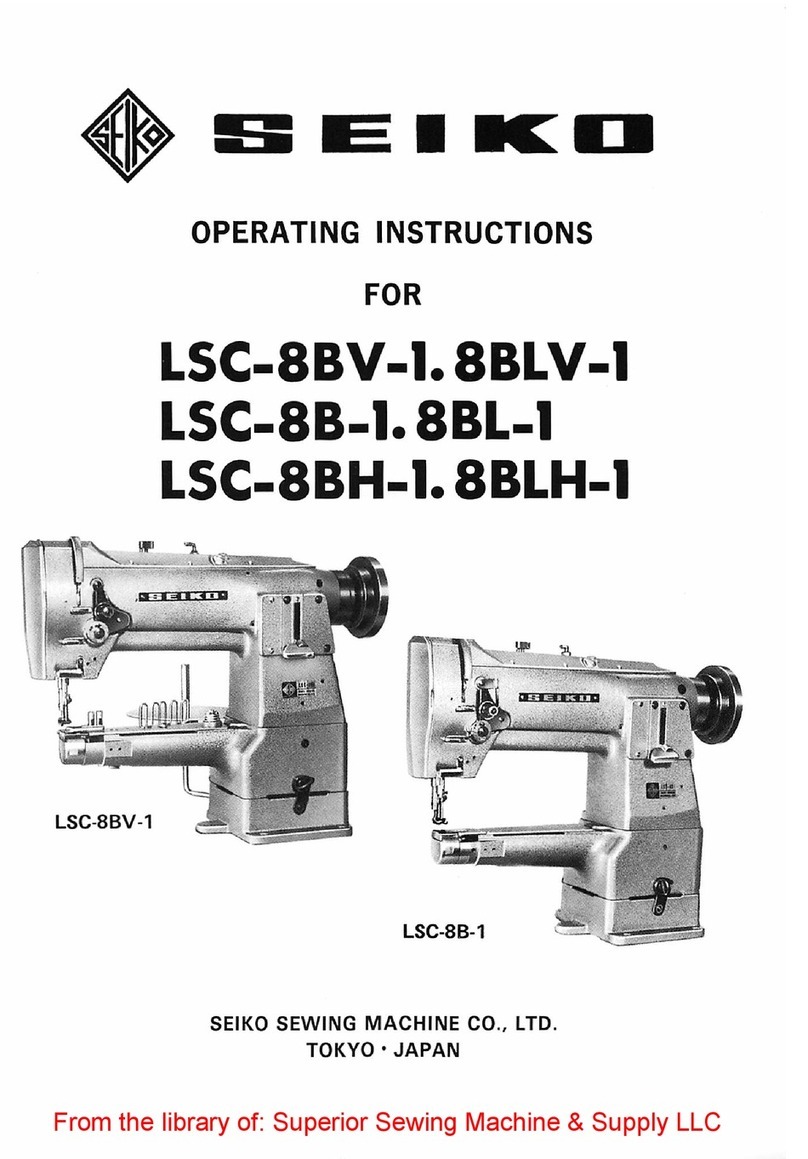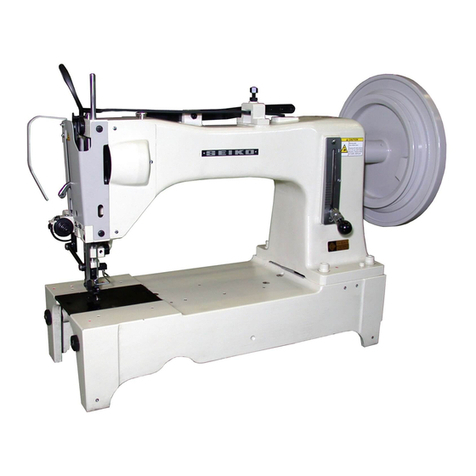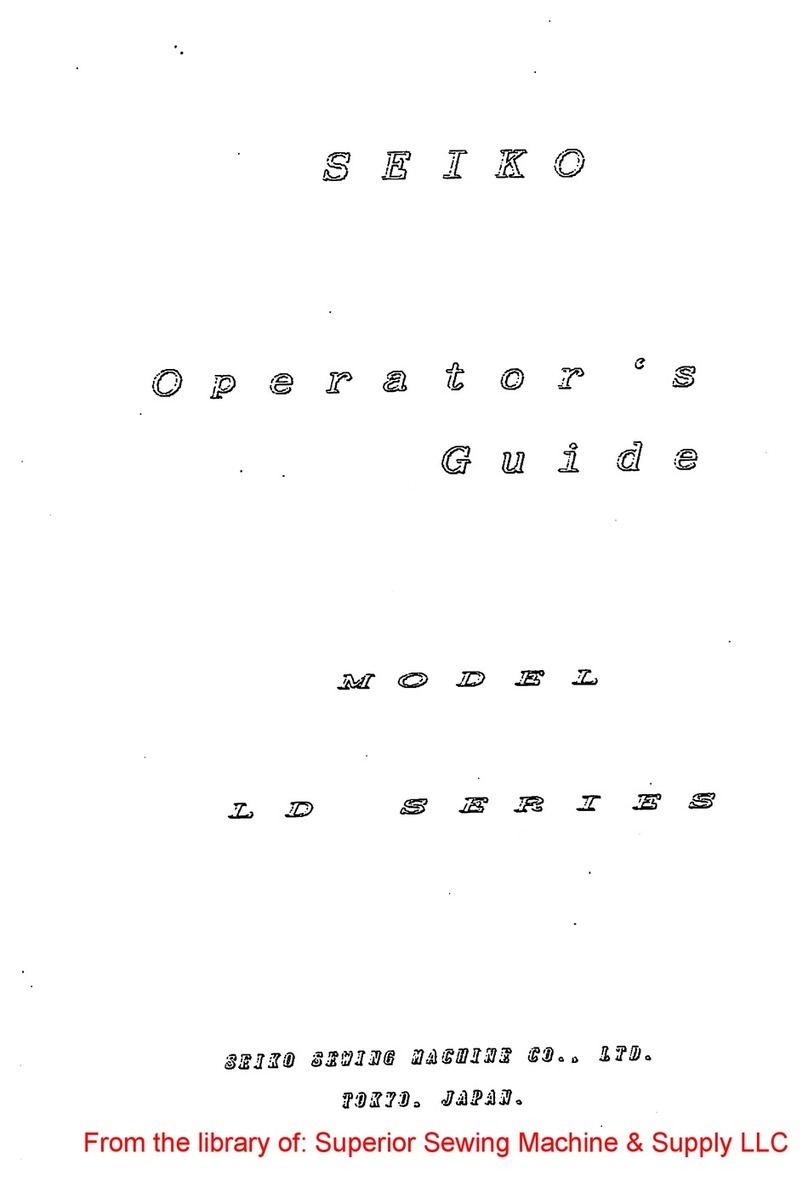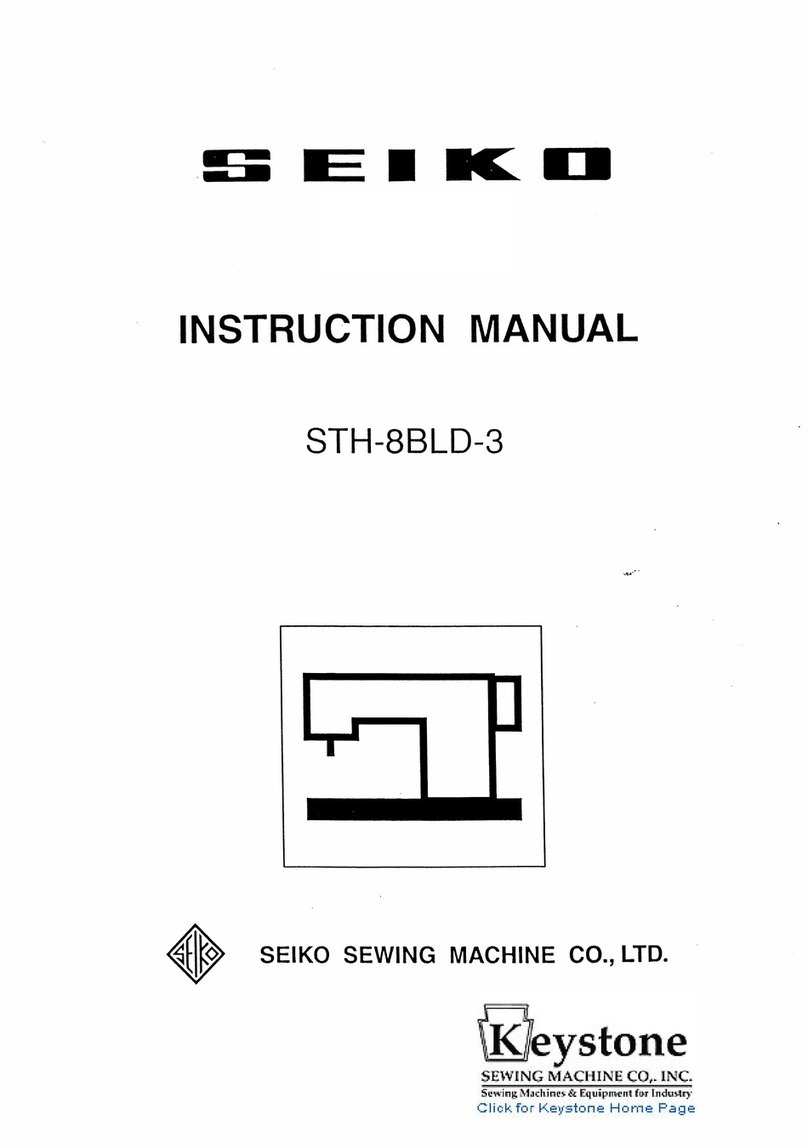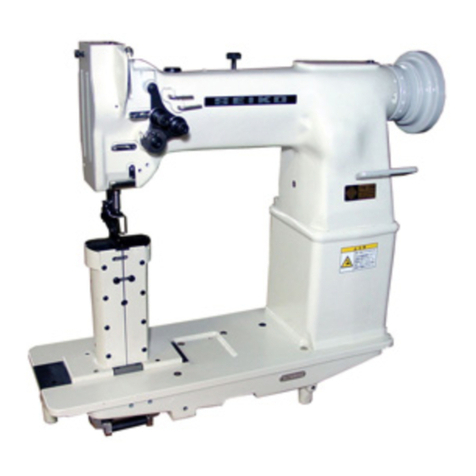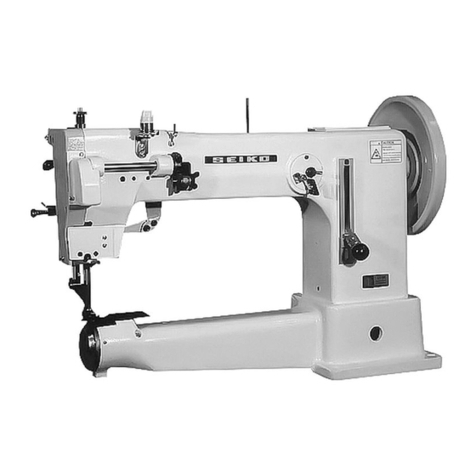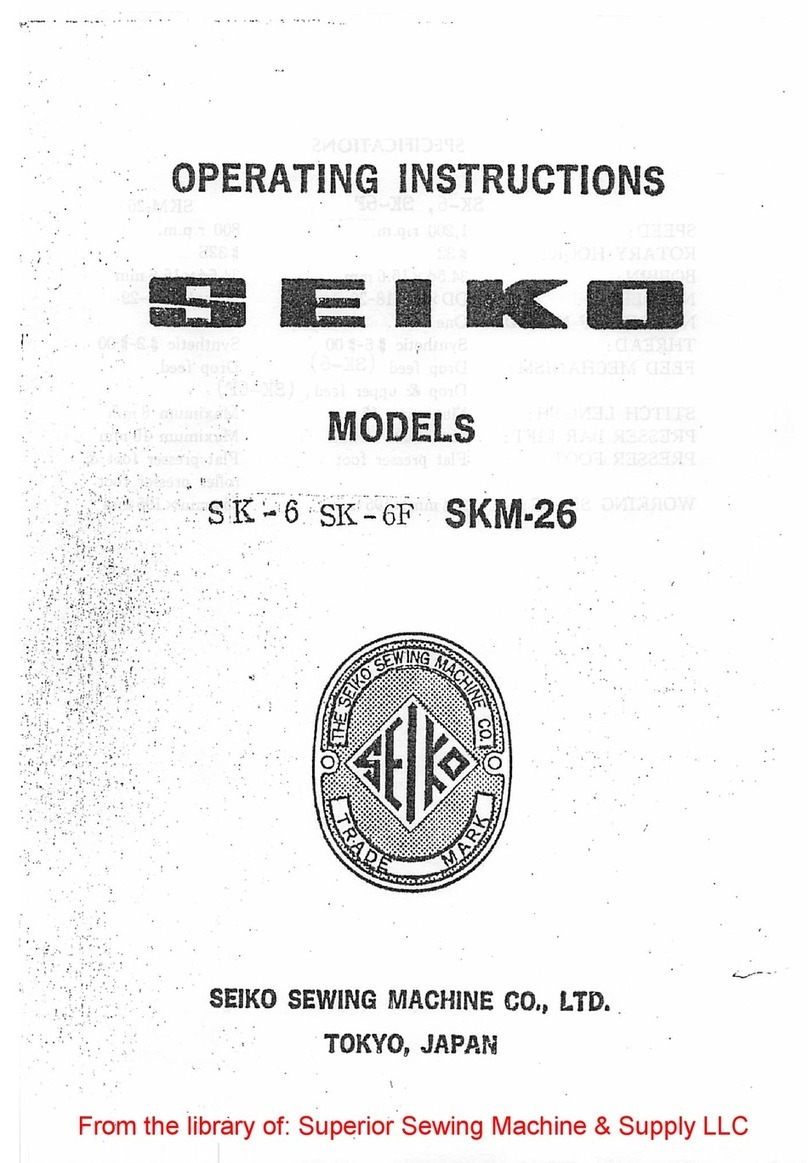
・Machine installation should only be carried ・Install the belt guards to the machine head
out by a qualified technician. and motor.
・Contact your SEIKO dealer or a qualified ・If using a work table that has casters, the
electrician for any electrical work that may casters should be secured in such a way so
need to be done. that they cannot move.
・The sewing machine weighs more than
・Use both hands to hold the machine head
55kgf. The installation should be carried out
when tilting it back or returning it to its
by two or more people.
original position. If only one hand is used,
・Do not connect the power cord until instal-
the weight of the machine head may cause
lation is complete, otherwise the machine
your hand to slip, and your hand may get
may operate if the treadle is pressed by
caught.
mistake, which could result in injury.
・Be sure to wear protective goggles and
・Be sure to connect the ground. If the gloves when handling the lubricating oil, so
ground connection is not secure, you run that no oil gets into your eyes or onto your
a high risk of receiving a serious electric skin, otherwise inflammation can result.
shock, and problems with correct operation Furthermore, do not drink the oil under
may also occur. any circumstances, as it can cause vomiting
・All cords should be secured at least 25mm and diarrhea. Keep the oil out of the reach
away from any moving parts. Furthermore, of children.
do not excessively bend the cords or secure
them too firmly with staples, otherwise there
is the danger that fire or electrical shocks
could occur.
・This sewing machine should only be used by ・Attach all safety devices before using the
operators who have received the necessary sewing machine. If the machine is used
training in safe use beforehand. without these devices attached, injury may
・The sewing machine should not be used for result.
any applications other than sewing. ・Do not touch any of moving parts or press
・Be sure to wear protective goggles when any objects against the machine while sewing,
using the machine. If goggles are not worn, as this may result in personal injury or damage
there is the danger that if a needle breaks, to the machine.
parts of the broken needle may enter your ・Use both hands to hold the machine head
eyes and injury may result. when tilting it back or returning it to its
・Turn off the power switch at the following original position. If only one hand is used,
times, otherwise the machine may operate if the weight of the machine head may cause
the treadle is pressed by mistake, which your hand to slip, and your hand may get
could result in injury. caught.
・ When threading the needle
・If an error occurs in machine operation, or if
・ When replacing the needle and bobbin
abnormal noises or smells are noticed, immedi-
・ When not using the machine and when
ately turn off the power switch. Then contact
leaving the machine unattended
your nearest SEIKO dealer or a qualified tech-
* When using a clutch motor, the motor nician.
will keep turning even after the power is
・If the machine develops a problem, contact
switched off as a result of the motor's
your nearest SEIKO dealer or a qualified tech -
inertia. Wait until the motor stops fully
nician.
before starting work.
・If using a worktable that has casters, the
casters should be secured in such a way so
that they cannot move.
CAUTION
Installation
Sewing
ⅱ
